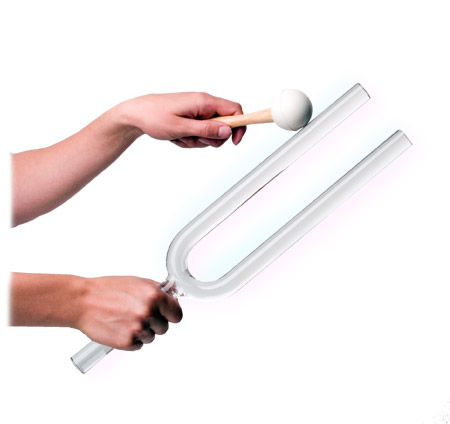Most of us in music ministry use a simple technique to determine if the microphone and the sound system is ‘On’. How many times have you seen someone tap on a microphone to see if it and the sound system are working? It is a simple, quick test.
But did you know that it could cause damage?
Depending upon the type of microphone it can shorten microphone life, cause quality problems, and promote fidelity loss. Tapping on the microphone is like punching the internal, sensitive diaphragm. Try this simple test. Lift your typical tapping finger next to your ear, and tap the ear canal opening. You can feel the painful thud deep in your ear. I find this to be not so pleasant, and so do our microphones.
So, what to do? How do we safely test to see if the microphone and sound system are working? Here is a simple tip.
Of course, it is best to check the microphone and sound system before service or during practice. If this is the case see the previous post on “Testing1-2-3“.
View and Add Comments
Labels:
Microphone,
Music Ministry,
Singers,
Vocalists
Saturday, July 17, 2010
Browse > Home /
Microphone /
Music Ministry /
Singers /
Vocalists
/ Is This Thing On? Tossing the Tap
Is This Thing On? Tossing the Tap
Monday, July 12, 2010
Browse > Home /
Feedback /
Microphone /
Music Ministry /
Singers /
Vocalists
/ That Annoying and Embarrassing Feedback
That Annoying and Embarrassing Feedback
View and Add Comments
Posted by
TallPaul
Monday, July 12, 2010


What music ministry hasn’t experienced that annoying thing called feedback? By feedback, I mean the high pitched noise or low pitched hum that occasionally arises from a hyper-sensitive sound system. It is annoying at best and in church it is distractingly embarrassing. Where it comes from and what causes it depend upon a number of factors, but the bottom line effect is the same, it is annoying! What is the most frequent cause?
In my experience, and likely yours, it is simple. It is pointing the microphone in the wrong direction.
View and Add Comments Labels: Feedback, Microphone, Music Ministry, Singers, Vocalists
Share this:

In my experience, and likely yours, it is simple. It is pointing the microphone in the wrong direction.
View and Add Comments Labels: Feedback, Microphone, Music Ministry, Singers, Vocalists
Share this:
Thursday, July 8, 2010
All Tuned Up? Tuning Tips
View and Add Comments
Posted by
TallPaul
Thursday, July 8, 2010


As I mentioned in a previous article, "All Tuned Up? Tuning Frequency" there are three ways that I know to tune an instrument.
Over time my poor piano drifts in pitch. This is natural and is periodically resolved by a professional piano tuner. However, it is in the few weeks before the piano tuner arrives (per the tuning schedule) to perform his trade where matters get sticky.
View and Add Comments Labels: Music Ministry, Piano, Tuning
Share this:

- Tuned to itself. Set one string as the pitch foundation, and tune the rest against it.
- Tuned to another instrument. All instruments are tuned according to one that is selected as the tune foundation. This instrument is the one most trusted, or the one most difficult to tune.
- Tuned to a tuner. All instruments tune to a calibrated instrument.
Over time my poor piano drifts in pitch. This is natural and is periodically resolved by a professional piano tuner. However, it is in the few weeks before the piano tuner arrives (per the tuning schedule) to perform his trade where matters get sticky.
View and Add Comments Labels: Music Ministry, Piano, Tuning
Share this:
Monday, July 5, 2010
Tom Booth Interview
1
comments
Posted by
TallPaul
Monday, July 5, 2010

Today we have a very special guest to the Music Ministry Tips community!
Ladies and Gentlemen, it is an honor and a pleasure to introduce Tom Booth.
I will most certainly fall short in attempting to describe Tom. He is an artist, a musician, a husband, a father, but above all, a man of God. He has been nominated for two Unity Awards, for Rock Album of the Year, “Cry the Gospel” and he won for Rock Song of the Year for – “Taste of Heaven.”
I could go on and on, so I think I will! Tom has now composed three Number 1 hits on the Contemporary Christian Music charts: “I Will Choose Christ” (composed with and recorded by Kathy Troccoli) which also received a Dove Award nomination from the Gospel Music Association, “Nothing is Beyond You” written with friends Mitch McVicker and the incredible Rich Mullins (recorded by Amy Grant), and “Love Has a Name” (composed with and recorded by Kathy Troccoli). He has written and performed songs for both Mother Teresa (including "Prayer of Abandonment") and Pope John Paul II.
1 comments Labels: Interview, Music Ministry, Tom Booth
Share this:




Today we have a very special guest to the Music Ministry Tips community!
Ladies and Gentlemen, it is an honor and a pleasure to introduce Tom Booth.
I will most certainly fall short in attempting to describe Tom. He is an artist, a musician, a husband, a father, but above all, a man of God. He has been nominated for two Unity Awards, for Rock Album of the Year, “Cry the Gospel” and he won for Rock Song of the Year for – “Taste of Heaven.”
I could go on and on, so I think I will! Tom has now composed three Number 1 hits on the Contemporary Christian Music charts: “I Will Choose Christ” (composed with and recorded by Kathy Troccoli) which also received a Dove Award nomination from the Gospel Music Association, “Nothing is Beyond You” written with friends Mitch McVicker and the incredible Rich Mullins (recorded by Amy Grant), and “Love Has a Name” (composed with and recorded by Kathy Troccoli). He has written and performed songs for both Mother Teresa (including "Prayer of Abandonment") and Pope John Paul II.
1 comments Labels: Interview, Music Ministry, Tom Booth
Share this:
Subscribe to:
Posts (Atom)





